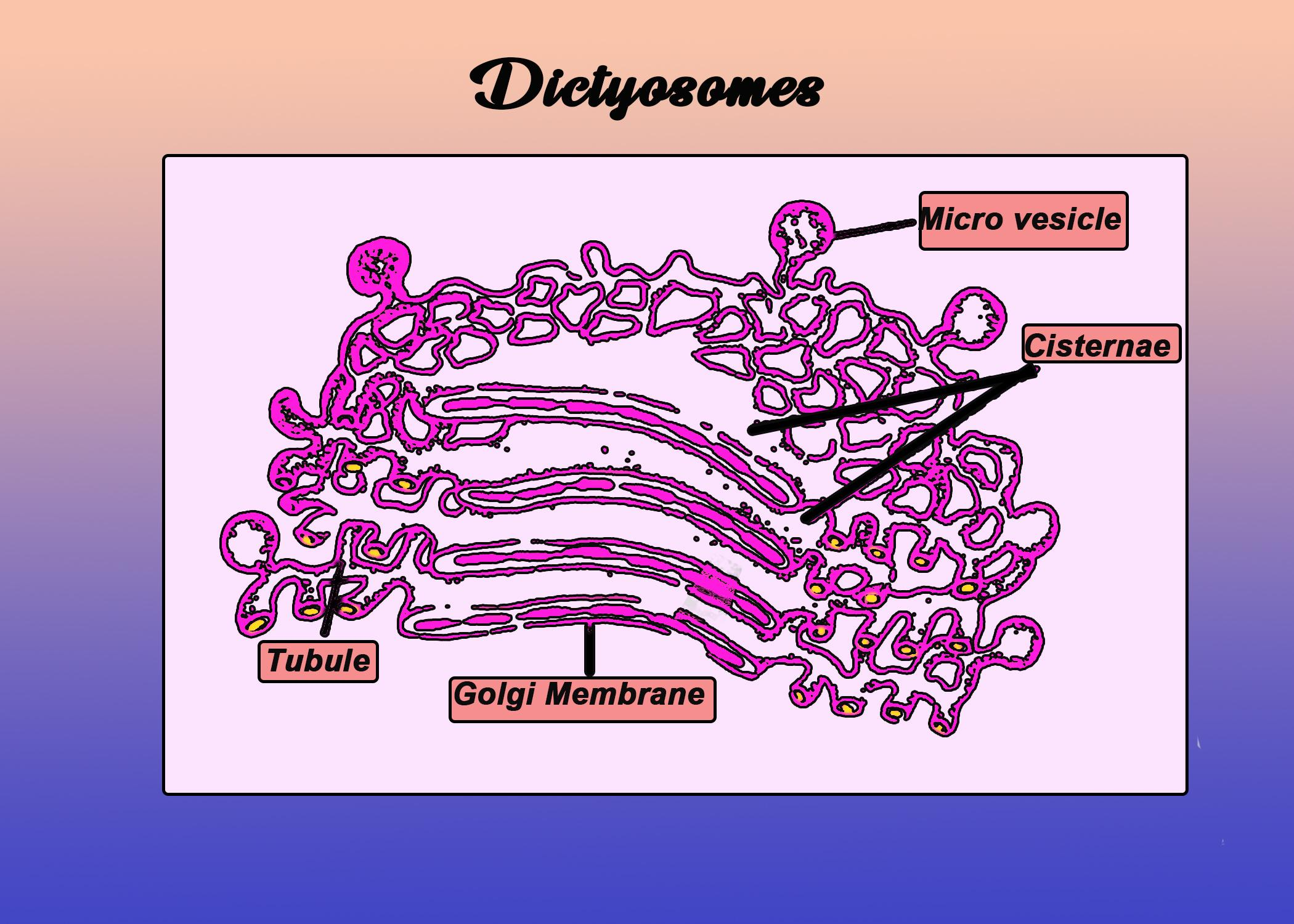Answer
365.1k+ views
Hint: Dictyosomes are structures that make up an important cell organelle found in most prokaryotic and eukaryotic cells, and are responsible for the storage and modifications of biomolecules necessary for building the cell.
Complete answer:
- Dictyosomes are net-like structures of flat, membrane-bound cavities called cisternae that comprise the Golgi apparatus. They are synonymous with the Golgi apparatus in their function.
- In the plant cells, the dictyosome helps in plate formation during cell division.
- Dictyosomes are sites for proteins to be stored, modified, sorted, and packed into vesicles (which are further closed off as Golgi vesicles).
- The difference between the dictyosomes of the animal and plant cells is that dictyosomes in animal cells are stacked tightly together while the dictyosomes in plant cells are dispersed in the cytoplasm, making them difficult to identify as the Golgi apparatus.
Additional Information:
- Plant cells have a few hundred dictyosomes while lower organisms have around four or fewer.
- The Golgi apparatus has two poles. They are (a) The cis-face (or forming face) located near the endoplasmic reticulum and (b) The trans face (or maturing face) that acts as the receiving and shipping departments of the Golgi apparatus.
- Products of the endoplasmic reticulum, such as proteins, are modified during transport from the cis pole to the trans pole of the Golgi apparatus.

Note:
- The term dictyosome was first used by the English biologist John Edmund Sharrock Moore.
- The Golgi apparatus is the organelle that is composed of cisternae and is involved in glycosylation, packaging of molecules for secretion, transporting of lipids within the cell, and giving rise to lysosomes.
Complete answer:
- Dictyosomes are net-like structures of flat, membrane-bound cavities called cisternae that comprise the Golgi apparatus. They are synonymous with the Golgi apparatus in their function.
- In the plant cells, the dictyosome helps in plate formation during cell division.
- Dictyosomes are sites for proteins to be stored, modified, sorted, and packed into vesicles (which are further closed off as Golgi vesicles).
- The difference between the dictyosomes of the animal and plant cells is that dictyosomes in animal cells are stacked tightly together while the dictyosomes in plant cells are dispersed in the cytoplasm, making them difficult to identify as the Golgi apparatus.
Additional Information:
- Plant cells have a few hundred dictyosomes while lower organisms have around four or fewer.
- The Golgi apparatus has two poles. They are (a) The cis-face (or forming face) located near the endoplasmic reticulum and (b) The trans face (or maturing face) that acts as the receiving and shipping departments of the Golgi apparatus.
- Products of the endoplasmic reticulum, such as proteins, are modified during transport from the cis pole to the trans pole of the Golgi apparatus.

Note:
- The term dictyosome was first used by the English biologist John Edmund Sharrock Moore.
- The Golgi apparatus is the organelle that is composed of cisternae and is involved in glycosylation, packaging of molecules for secretion, transporting of lipids within the cell, and giving rise to lysosomes.
Recently Updated Pages
How do you arrange NH4 + BF3 H2O C2H2 in increasing class 11 chemistry CBSE

Is H mCT and q mCT the same thing If so which is more class 11 chemistry CBSE

What are the possible quantum number for the last outermost class 11 chemistry CBSE

Is C2 paramagnetic or diamagnetic class 11 chemistry CBSE

What happens when entropy reaches maximum class 11 chemistry JEE_Main

Calculate the volume occupied by 88 gram of CO2 at class 11 chemistry CBSE

Trending doubts
Difference between Prokaryotic cell and Eukaryotic class 11 biology CBSE

Difference Between Plant Cell and Animal Cell

Fill the blanks with the suitable prepositions 1 The class 9 english CBSE

Change the following sentences into negative and interrogative class 10 english CBSE

Give 10 examples for herbs , shrubs , climbers , creepers

What organs are located on the left side of your body class 11 biology CBSE

Write an application to the principal requesting five class 10 english CBSE

What is the type of food and mode of feeding of the class 11 biology CBSE

Name 10 Living and Non living things class 9 biology CBSE



